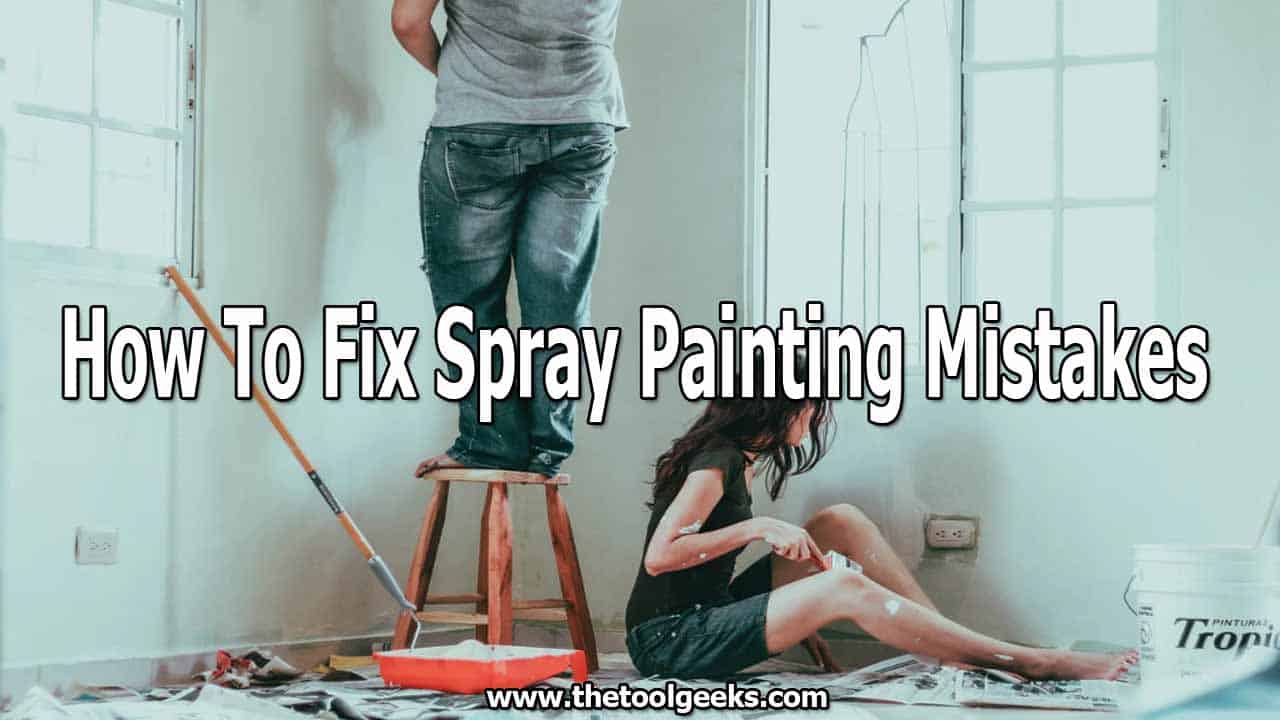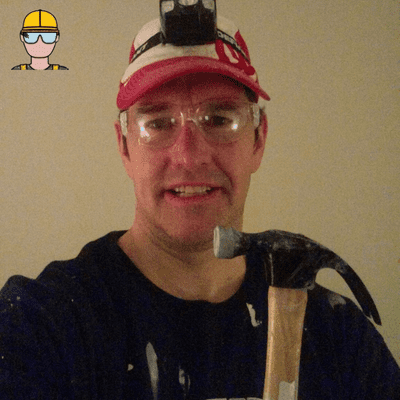How To Fix Spray Painting Mistakes: Including Uneven Spray Paint
TheToolGeeks.com is a participant in the Amazon Services LLC Associates Program and other affiliate advertising programs. We may earn from qualifying purchases. (Learn More).
Whether you use a spray paint can or an airless spray painter, at some point you are bound to make a mistake. Don’t let this stop you from achieving a perfect, glossy finish. It is possible to fix these mistakes using simple tips and tricks and get the result you wanted.
How?
We’ll get there but before that, it’s important to know the right way to spray paint. After that, we’ll give you some surefire ways that can help fix uneven spray paint in a jiffy.
How To Fix Uneven Spray Paint?
If you’re reading this you’ve probably messed up. There’s nothing to worry about because we are about to tell you how to fix common mistakes made by even the most experienced painters out there.
Let’s see what they are and how to make the paint look perfect.
Does the paint job look patchy?
All you need is another coat (or a few!) of spray paint and you’ll be good to go. If you didn’t apply enough layers the job may end up looking patchy with bits of the old color showing through.
To fix a patchy surface, wait for the previous coat to completely dry followed by a second coat. Does the surface look polished now?
Congratulations!
You just saved the paint job you thought was ruined.
How To Deal with Paint Bubbles?
Blisters or bubbles may appear when the paint doesn’t properly adhere to the surface. This happens if the surface was dirty and not cleaned before application. These unsightly spots can also appear in extremely humid conditions or if it is extremely hot. However, there’s a solution to this dilemma too.
Scrape off the blisters with a paint scraper and use sandpaper to smoothen the surface. Coat the area with primer and repaint the surface after the primer dries.
Scrapping Splatters Off Glass?
Did you get splatters or drips on glass?
Once the paint fully dries get a razor blade and let’s deal with it. Set the blade at an angle and start scraping off the unwanted paint. Carefully clean the blade with a damp cloth if required and continue the scraping process.
How To Delete Drips and Runs From Your Coat?
Drips can occur if you apply a very thick coat of paint onto a surface. If you see any drips or runs, wait for the paint to dry. Once it has completely dried scrape the drips off with a paint scraper. Now, sand the surface and repaint the section so it blends well with the rest of the surface.
Painter’s Tape Conundrum?
Did you forget to take off the tape?
Well, if you take it off now it is more likely that you’ll peel off the paint. If you’ve already discovered this, then let’s fix it up.
Sand the area until it’s smooth and wipe it with a damp cloth. Now, apply primer and retouch the section with the paint. Cover the spot with another coat after the first one has dried completely.
How to Achieve a Perfect Spray Paint Job?
Spray painting may seem easier than using items like a brush and liquid paints but you still need some special knowledge to do it properly.
It is important to possess the right materials and tools to protect your surroundings and your health. To get the best results, follow these simple steps.
Step 1: Picking the right materials
Spray paint is available in a plethora of shades and has hundreds of manufacturers. Based on your project’s requirement pick the best spray paint. Besides that, you will also need a few other tools, they are:
- Newspaper, drop cloth, or plastic tarp.
- Painter’s tape.
- Disposable gloves.
- Safety glasses.
- Ventilator mask.
Read More — Best Automotive Primer Gun
Step 2: Prepping the work area
The most important step when working with spray paints is working outdoors in a well-ventilated space. Do not skip it as the fumes emitted from the spray paint can cause respiratory damage. Also, see to it that the humidity is below 65% and it is sunny and warm outside. The paint won’t adhere well if it is cold or wet where you are.
Place newspapers, drop cloths, or a plastic tarp down with rocks to keep them secure in place. Spread them far enough so you don’t end up making a mess. Next, tape off any area you don’t want to paint.
Step 3: Using a sawhorse or a paint box
If the item you’re painting can be suspended in the air through a sawhorse, we recommend getting one. This will make it very easy to get the job done as you won’t have to bend as much to cover more area. For smaller items, you can set them inside a box placed on its side. This minimizes the possibility of the paint ending up in unwanted places.
Step 4: Clean the surface
Dirt, dust, and grease prevent the paint from thoroughly sticking to the surface. Before you begin spray painting wipe off any debris clinging to the surface. Use a damp cloth or rag to clean the surface. Make sure to dry the surface before you start painting.
For rough surfaces, use sandpaper to even out the surface and get a smooth finish.
Read More — Best Sprayer for Stain
Step 5: Put on protective gear
Put on your safety glasses and gloves before you start painting. Safety glasses ensure that the paint does not blow back towards your face as it is toxic.
Respirators may cost you $20 to $30 but it is still better than paying medical bills later on.
Please Note- Stop painting or take a break if you start feeling even slightly dizzy.
Step 6: Primer application
Give the primer can a good shake for about two minutes. Start spraying back and forth and coat the object you’re painting evenly. Wait for the primer to dry completely before you begin painting the surface. Check the can to find how long the primer will take to dry.
Step 7: Paint the item and let dry
Now, we will finally start painting. Shake the spray can well before you start painting. If any residue settles at the bottom of the can, shaking it will give the paint a good mix.
This gives you a consistent finish for your project. Before painting the object do a spot test. Spray the paint on an inconspicuous area or a piece of cardboard. This will give you a rush idea of how the paint will look. Once you’re sure, spray on the first coat. Make sure you don’t spray on too much as it will start to drip off.
After the paint dries, move on to the next step. It can take a minimum of 24hours to dry.
Read More — Best Small Sprayers
Step 8: Apply the second coat of paint
Spray on the second coat of paint once you’re sure that the first layer has dried. Although this step can be skipped if you’re satisfied with the result after the first coat. But applying a second coat will give the project a more even coverage.
Step 9: Seal it with a topcoat
After the final coat dries, spray a clear topcoat if desired. Most objects won’t require a topcoat unless you frequently handle them.
The topcoat will take another day to dry. So, don’t touch the surface before the coat dries out.
Oh no!
Did you mess up at any step?
Don’t worry, we have a few tips that can help you correct this mistake.
Read More — How To Remove Paint From Car Wheels?
Conclusion
It is not difficult to fix uneven spray paint or any blunder if you have the right tools. However, if you follow the correct steps from the beginning, there won’t be any need to find a fix later on.
Whether you’ve noticed bubbles or the drips have stained your glass, all you need is a hack from the list above. A simple retouch can solve most spray painting mistakes.
Amazon and the Amazon logo are trademarks of Amazon.com, Inc, or its affiliates.

